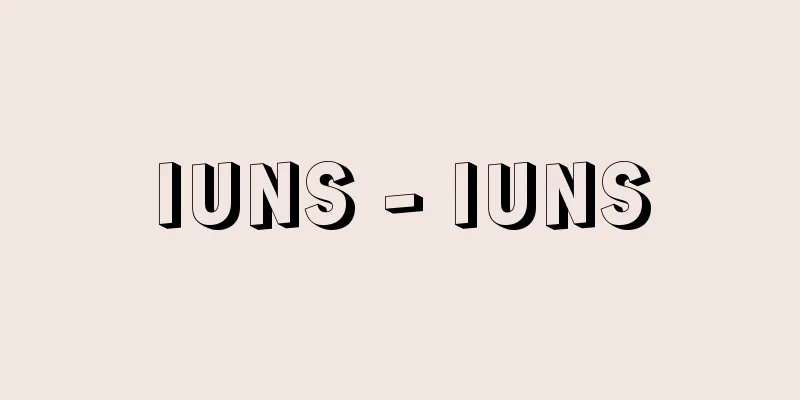Aupanishadha - Aupanishadha

|
...In Sanskrit, it is called Vedāntavāda. Vedānta means "the final part of the Vedas" and refers to the Upanishads, so they are also called "students of the Upanishads (Aupaniṣada)". It is estimated that a large part of the old Upanishads was probably created by around the 3rd century BCE, and the Vedānta school or what is thought to be its origin seems to have been established around that time. *Some of the terminology explanations that mention "Aupanishada" are listed below. Source | Heibonsha World Encyclopedia 2nd Edition | Information |
|
…サンスクリットでベーダーンタバーダVedāntavādaという。ベーダーンタは〈ベーダ聖典の終りの部分〉を意味し,ウパニシャッドを指すので,〈ウパニシャッドの学徒(アウパニシャダAupaniṣada)〉とも呼ばれる。 おそらく前3世紀ころまでには,古ウパニシャッドのかなりの部分が作成されたと推定されるが,ベーダーンタ学派ないしその源流と考えられるものも,そのころ成立したらしい。… ※「アウパニシャダ」について言及している用語解説の一部を掲載しています。 出典|株式会社平凡社世界大百科事典 第2版について | 情報 |
Recommend
wehrlite
…In general, pyroxene is present in addition to o...
Delaunay - Robert Delaunay
French painter. Born in Paris. Initially influenc...
Tact
〘noun〙 (Takt・tact) ① rhythm. ※Taijoubutsushin (192...
Kadozekkyo - Kadozekkyo
〘Noun〙 In the Edo period, a person who wore a haor...
Al-Murābi
A dynasty (1056-1147) established by the Sanhaja ...
Priest - Soukan
The role of supervising monks and nuns and cracki...
Balloon jellyfish (Hormiphora palmata)
A ctenophore (illustration) of the family Polytmin...
Turning radius - turning radius
The radius of rotation about an axis of a point ma...
"Kanto Heiranki" - Kanto Heiranki
…A record of the medieval Kanto wars. Also called...
Bachelor - John Batchelor
British missionary and Ainu researcher. Born in A...
Kirkwaif Dynasty - Kirkwaif Dynasty
...An ancient name for the mountainous region on ...
San
[Sound] San (Wu) (Han) [Reading] praise, praise, h...
Volume number - Kanju
〘Noun〙 Buddhist term. A document sent to a request...
Ahrland, SH (English spelling)
…These discoveries were followed by the discovery...
Frog beetle - Frog beetle
…The dog beetle, Linguatula taenioides , parasiti...






![Henry [III] - Henry](/upload/images/67cc7fcb7d66f.webp)


